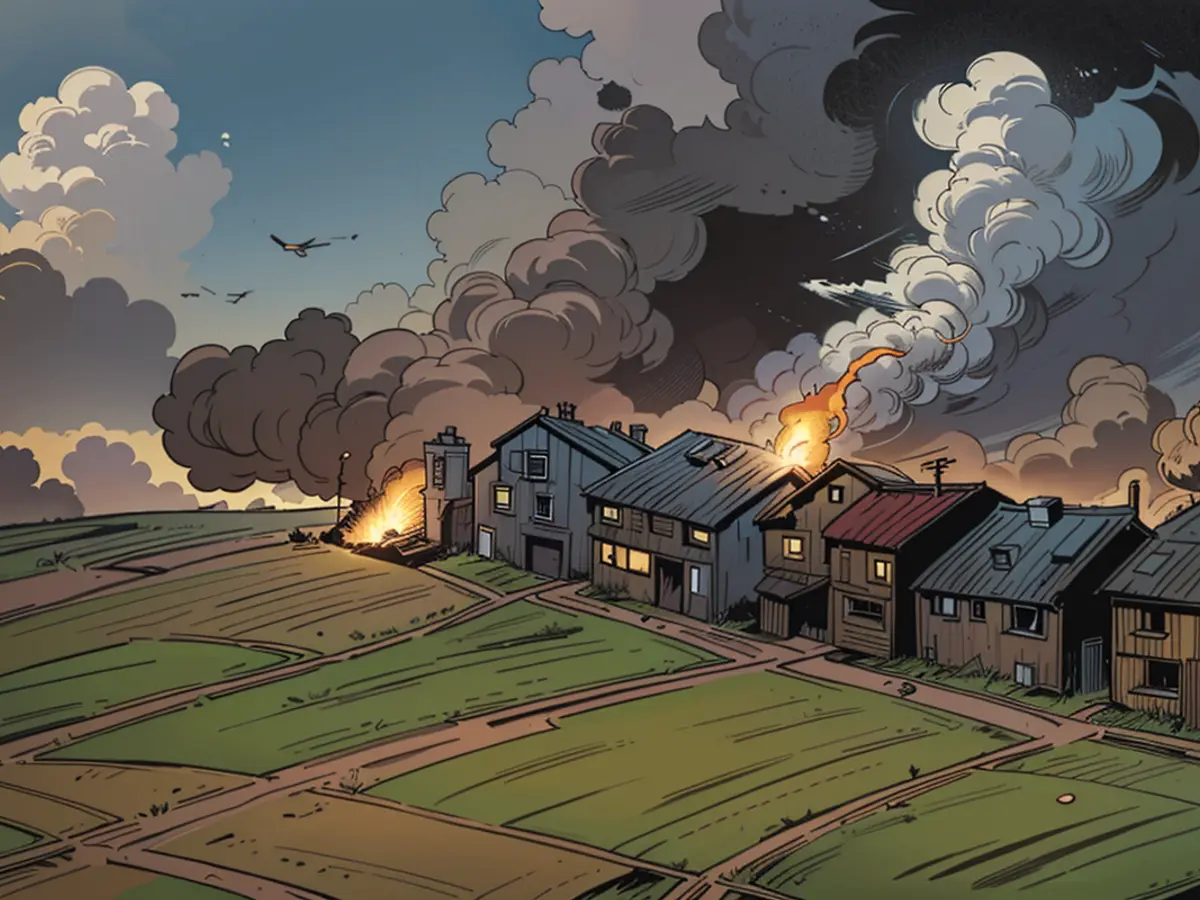- Sky-borne Fiendish Drone Incinerates Ground Positions from On High
A chilling new form of warfare terror has reared its head. A clip shows a drone igniting a whole line of trees into flames. These slender strips of woodland are common in Ukrainian landscapes. They were planted during the Soviet era to curb soil erosion, nowadays serving as barriers for defensive positions and bunkers.
Thermite Burns with Intense Heat
This drone doesn't spritz fuel like a traditional flamethrower; instead, it showers thermite upon the adversary. Thermite is a blend of iron(III) oxide rust and aluminum grains, ignited by an ignition source. It generates heat up to 2400 degrees Celsius, typically employed for welding duties. In this context, it functions as "supercharged napalm," burning with double the intensity. Once ignited, the response is hard to cease. Its temperature melts steel, armor, clothes, and even human flesh. In the clip, it sets a row of trees ablaze.
The thermite is stowed away within the drone's container, raining down upon the enemy. Even in minimal quantities, it can prove fatal. In larger drones carrying over 40 kilograms of payload, the consequences are more detrimental. Both sides claim the video, but it's plausible that the Ukrainian 108th Separate Brigade of Territorial Defense was responsible for it, nicknaming the system "Dragon Drone." This brand of drone warfare may bring back the horrific napalm attacks of American forces in Vietnam.
Rapid Evolution in Drone Warfare
All innovations in drone warfare often face the issue that a mere idea can spark a development, with the technical execution being relatively straightforward. Consequently, opponents can swiftly replicate their own invention. The Dragon Drone once again underscores the blistering pace of innovation with these weapons. Within just a few weeks, there have been remarkable advancements. The Russians are employing drones controlled by fiber-optic cables on a larger scale, making them resistant to signal jammers.
Kyiv has successfully elevated the flight altitude of simple quadcopters, enabling them to intercept Russia's surveillance drones. The Russians continue to grapple with catching up to the Ukrainians in heavy drones. Ukrainian Iskander units have been supplied with their own surveillance drones, significantly reducing the time between target inspection and strike, thus enhancing hit rates.
Russian videos suggest that kamikaze drones are now directly operated by commandos and employed as substitutes for anti-tank guns or anti-tank missiles. This tactic skips the need for an observation drone to detect a target; instead, soldiers ambush and attack upon noticing a target.
The use of thermite-equipped drones by both sides in the conflict suggests a rapid evolution in drone warfare, with Ukraine's Dragon Drone setting a new standard for destruction. This aircraft, capable of showering enemy positions with thermite, generates heat up to 2400 degrees Celsius and can melt steel and human flesh when ignited.








